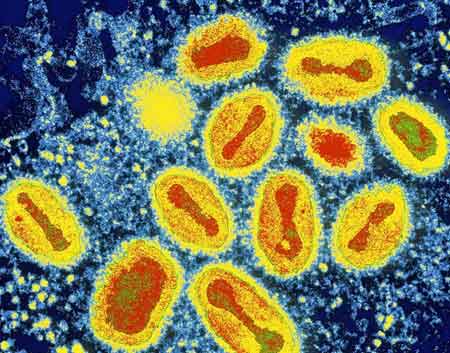
|
查看原文 The last surviving creatures on Earth will be tiny organisms living deep underground, according to scientists. Researchers used a computer model to assess our planet's fate billions of years from now. They found that as the Sun becomes hotter and brighter, only microbes would be able cope with the extreme conditions that the solar changes would bring. The research is being presented at the National Astronomy Meeting. Jack O'Malley James, from the University of St Andrews in Scotland, said: "There won't be very much oxygen present, so they need to be able to survive in low or zero-oxygen environments, high pressures, and high salinities because of evaporating oceans." Mass extinction The future of life on Earth is tied to that of the Sun, and over time, our star will become more and more luminous. Scientists from the universities of St Andrews, Dundee and Edinburgh used this fact to create a forecast for our planet's future environment. In a billion years' time, the heat from the Sun will become so intense, that the oceans start to evaporate. "Once you get to this tipping point, you get a lot more water in the atmosphere and because water vapour is a greenhouse gas, that sets this runaway greenhouse effect... and you end up with the Earth heating up to 100C or more plus what we experience today," explained Mr O'Malley James, a PhD student. This, he said, combined with falling levels of oxygen, would lead to the rapid loss of plants and larger animals. Soon after, a group of microbes called extremophiles would be the only life forms left. These tiny organisms are found on Earth today, and can cope with hostile environments. These, the scientists said, would be the only creatures that could withstand the heat, aridity and poisonous atmosphere of this future Earth. They believe that they would probably be clustered around the last drops of water deep underground. Eventually as conditions worsen they too will vanish, and in about 2.8 billion years, Earth will be devoid of all life. 'Microbial worlds' The researchers said that studying the rise and fall of life on our planet could give us an insight into how life might survive elsewhere in the Universe. Mr O'Malley James told the BBC: "If you were to find an Earth-like planet and to take a snapshot in time of the life living on the surface, it's more likely that you would find microbial life than you would the more complex life like we see on Earth today." The researchers said that microbes cause subtle changes to the ratios of gasses in the atmosphere, and this could enable astronomers to one day detect their presence on other Earth-like planets. "One of the best candidates is methane. This could be used to indicate the presence of life, although it depends on how much is produced and whether it builds up to a detectable level in the atmosphere... If we can pick up all these subtle levels of gasses on remote planets - maybe we could detect it," Mr O'Malley James said. |
據(jù)BBC7月2日?qǐng)?bào)道,科學(xué)家認(rèn)為,地球上最后生存的生物將是生活在地下深處的微生物,因?yàn)殡S著太陽變得越來越熱,越來越亮,只有細(xì)菌才能在這種極端條件下茍延殘喘。 圣安德魯斯大學(xué)、敦提大學(xué)和愛丁堡大學(xué)的科學(xué)家預(yù)計(jì)未來10億年間太陽將變得非常熾熱,地球海洋開始消失。 “進(jìn)入這個(gè)轉(zhuǎn)折點(diǎn),大氣層中有許多水分,而水蒸氣是一種溫室氣體,將加劇溫室效應(yīng),地球溫度升至100攝氏度,甚至更高,”蘇格蘭圣安德魯斯大學(xué)的杰克·詹姆士說,與此同時(shí),隨著氧氣減少,將導(dǎo)致植物和大型動(dòng)物迅速消失。 不久,一種被稱作嗜極端菌的細(xì)菌將是地球上剩下的唯一生命形式。這種微生物現(xiàn)在就已在地球上存在,可以在惡劣環(huán)境下生存。 “屆時(shí)沒有太多的氧氣,因此它們需要在低氧或無氧環(huán)境下生存,高壓,高鹽,因?yàn)楹K舭l(fā)殆盡。”杰克·詹姆士說。 不過隨著生存條件更加惡化,這種細(xì)菌也終將滅絕,大約在28億年左右,地球?qū)]有任何生命。 相關(guān)閱讀 (編譯:王輝) |
